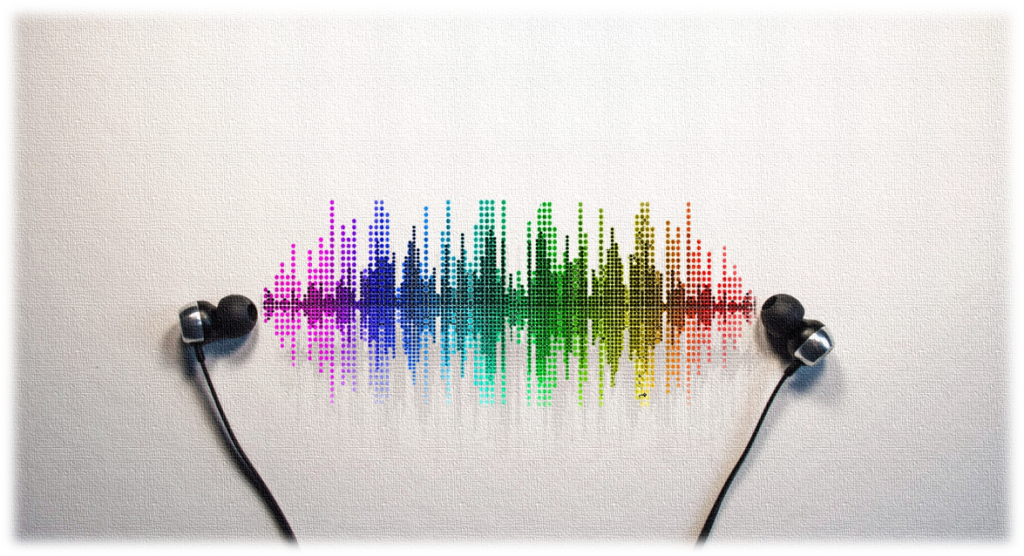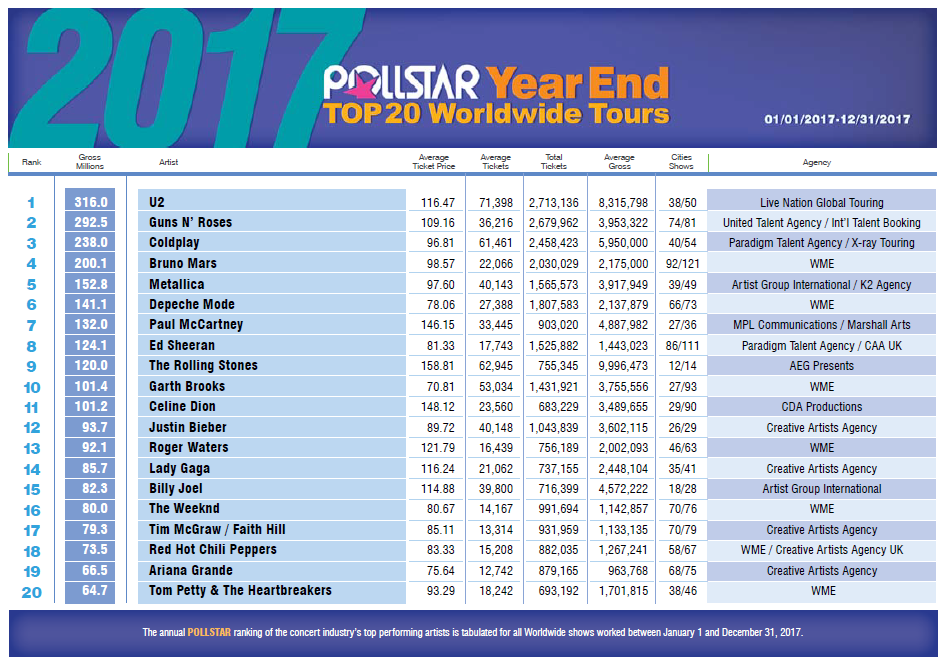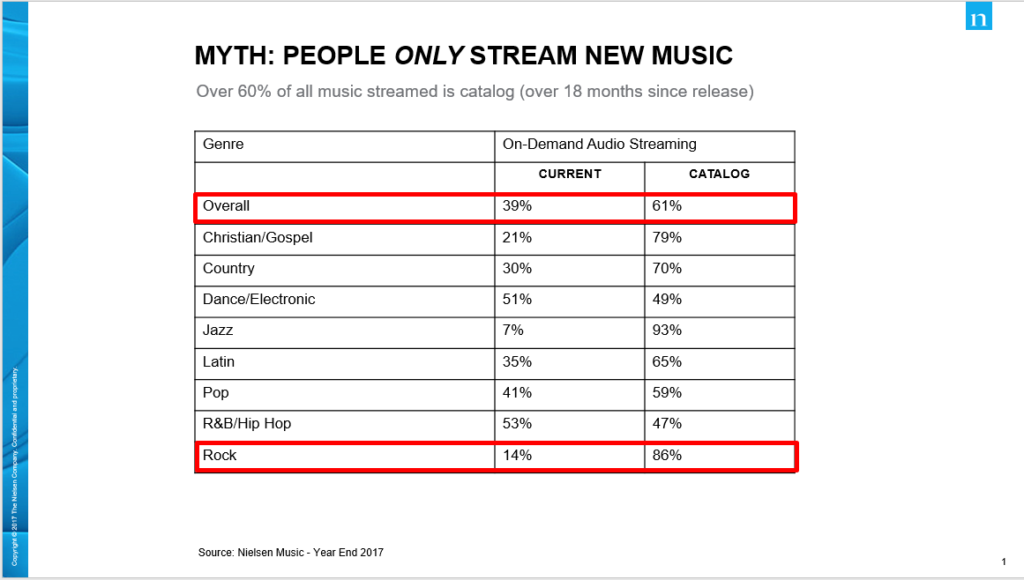It’s the best of JacoBLOG. Early last year, we analyzed the amazing power of Christmas music, the box office success of classic concerts, and other music phenomena revolving around the unique appeal of older music. It’s all about nostalgia. And one year later, the words of Irish journalist, Ed Power, who noted, “Today we no longer chase our youth – we chase our childhoods,” continues to resonate.
Whether you spent money to see Bruce on Broadway, the farewell tours of Elton John, Paul Simon, and others, or you took the family to see “Bohemian Rhapsody,” the music nostalgia wave raged on. Today’s “Best of” post originally ran early in 2018, and turned out to be one of the most-read in 2018. And interestingly, not a whole lot has changed, one year later.
Nostalgia continues to define the music and pop culture scene. Will that continue in 2019? Stay tuned. – FJ
 I enjoy my role as “Data Whisperer” – taking available analytics and research and identifying trends and phenomena that impact our industry and our ability to entertain. These days, there’s no shortage of information, research studies, and other sources of information. And yet, we often find ourselves groping to connect those statistical dots to identify trends and changes in the music patterns that are all around us.
I enjoy my role as “Data Whisperer” – taking available analytics and research and identifying trends and phenomena that impact our industry and our ability to entertain. These days, there’s no shortage of information, research studies, and other sources of information. And yet, we often find ourselves groping to connect those statistical dots to identify trends and changes in the music patterns that are all around us.
I think it’s safe to say we’re living through an audio renaissance, evidenced by the sheer number and power of gadgets available to anyone in our society from 7 year-olds to octogenarians. When you consider that devices the size of a pack of cigarettes can store and play back every song ever recorded, it’s no surprise we’re in the middle of an amazing moment in audio consumption. That’s one of the trends we’ll be tracking closely as Paul and I trek through the seemingly endless displays in the Las Vegas Convention Center at CES. We’ll be toting around two dozen broadcast executives in our search for the latest and greatest that will impact our business – and our lives.
But you don’t have to brave the crowds and taxi lines at CES to understand that so much of what’s happening in our space-aged, fast-paced, hi-tech world is actually a retro trip to the past – in some cases, going back decades to satisfy needs deeply embedded in our collective crania.
Exhibit A is Christmas music 2017 – a radio juggernaut that seems to get stronger with age and the weird, unsettling world in which we increasingly live. We won’t know the end result of this year’s wall-to-wall broadcasts of Burl Ives, Brenda Lee, and Bing Crosby. But those names alone and the power of their music 60 and 70 years later in our smartphone and social media world speaks to the awesome force we call by many names – old school, throwbacks, oldies.
I got my PhD in Nostalgia at the College of Classic Rock back in the ’80s. And it’s an education that keeps paying off for me, as well as for hundreds and hundreds of successful radio stations all over the country, as the Classic Rock format continues to perform at a strong pace, now winning over new fans under 40 years old. Of course, they’re way too young to remember this music when it came out. But they’re old enough to know just how good it really is.
And it’s not just here in North America. A great article in the Irish Examiner – “Music has taken a trip down memory lane”- by writer Ed Power crystallizes many of the underpinnings of music’s nostalgia machine – and its impact on commerce. He notes that concert halls are filling up at record rates by nostalgia-infused acts, highlighted by a Guns N’ Roses comeback, the staying power of U2 (a band that’s now 40+ years old), and a Broadway smash that isn’t a musical, but instead is a ’70s rocker named Bruce Springsteen who’s grossing millions on the stage for audiences that just can’t get enough.
How to explain this phenomenon. Power observes, “Today we no longer chase our youth – we chase our childhoods.”
Whether its millions of celebrants trying to recapture the Christmas holidays of their adolescence, aging rockers going back to those good old college days, or Millennials trying to understand what all the fuss is about, music nostalgia shows no signs of stopping.
Look at this almost-finished end of year list from Pollstar of the top-grossing concerts around the world in 2017 – a record year, by the way. Studying where people are spending their entertainment dollars is part of the analysis This Top 20 list of mostly older performers generated $2.64 billion (with a B) in 2017 – up $241 million from the previous year. The concert experience continues to strengthen, bolstered by bygone acts that include U2, Paul McCartney, the Rolling Stones, Guns N’ Roses, Roger Waters, Billy Joel, and Metallica. Even Tom Petty, whose 2017 was tragically cut short by his untimely passing, made the list.

Still, we’re living in a digital world where despite the comeback of vinyl records, streaming continues to dominate our conversations and our ears. What types of music are people streaming, and how does that inform our understanding of the musical world around us?
For answers, there’s Nielsen’s newly released “2017 Year-End Music Report.” It’s loaded with great data that explains what’s happening in the world of music consumption. And it doesn’t take a data head to read these tea leaves.
Here’s a look at one of the key charts, debunking the notion that streaming is solely about new music. In fact, the vast majority – 61% – of streamed music in 2017 is considered “catalog.”
 Now Nielsen Music’s Director/Radio, Haley Jones reminds us that “catalog” is music 18 months or older.
Now Nielsen Music’s Director/Radio, Haley Jones reminds us that “catalog” is music 18 months or older.
But looking at my musical garden – lumped together under “Rock” at the bottom of the chart – shows that nearly nine of every ten songs streamed in the genre are, in fact, old. What does that tell you about the directionality of taste?
(Yes, it would help to see discreet breakouts by narrower “Classic Rock” and “Alternative” genres, but it doesn’t take a weatherman to know which way these musical winds are blowing.)
The chart explains a lot about the evergreen appeal of Classic Rock, but it also sheds light on the state of other formats (hello, Country radio PDs and consultants). When the two biggest formats for streaming new music are Hip-Hop and EDM-flavored, that leaves a lot of formatic real estate dominated by older product.
It’s where people are spending their entertainment dollars – but perhaps even more importantly, where they’re spending their precious time.
So, when they go back in time to enjoy their favorite music, let’s stop being surprised.
To gain access to Nielsen Music’s insightful report, click here, fill out the form, and download.
- Traveling At The Speed of CES - January 10, 2025
- The One Thing Missing At CES? - January 9, 2025
- AI Your Commercials - January 8, 2025





Audio Recall: Powerful!
Indeed, Clark!
I think back to 1984 when Detroit radio had 4 Rock stations on at the same time WRIF,W4,WABX,WLLZ Summer of radio I will never forget and all the great jocks on all those stations
It WAS quite a lineup of great talent, Scott.
That was very interesting. Thanks for the insight.